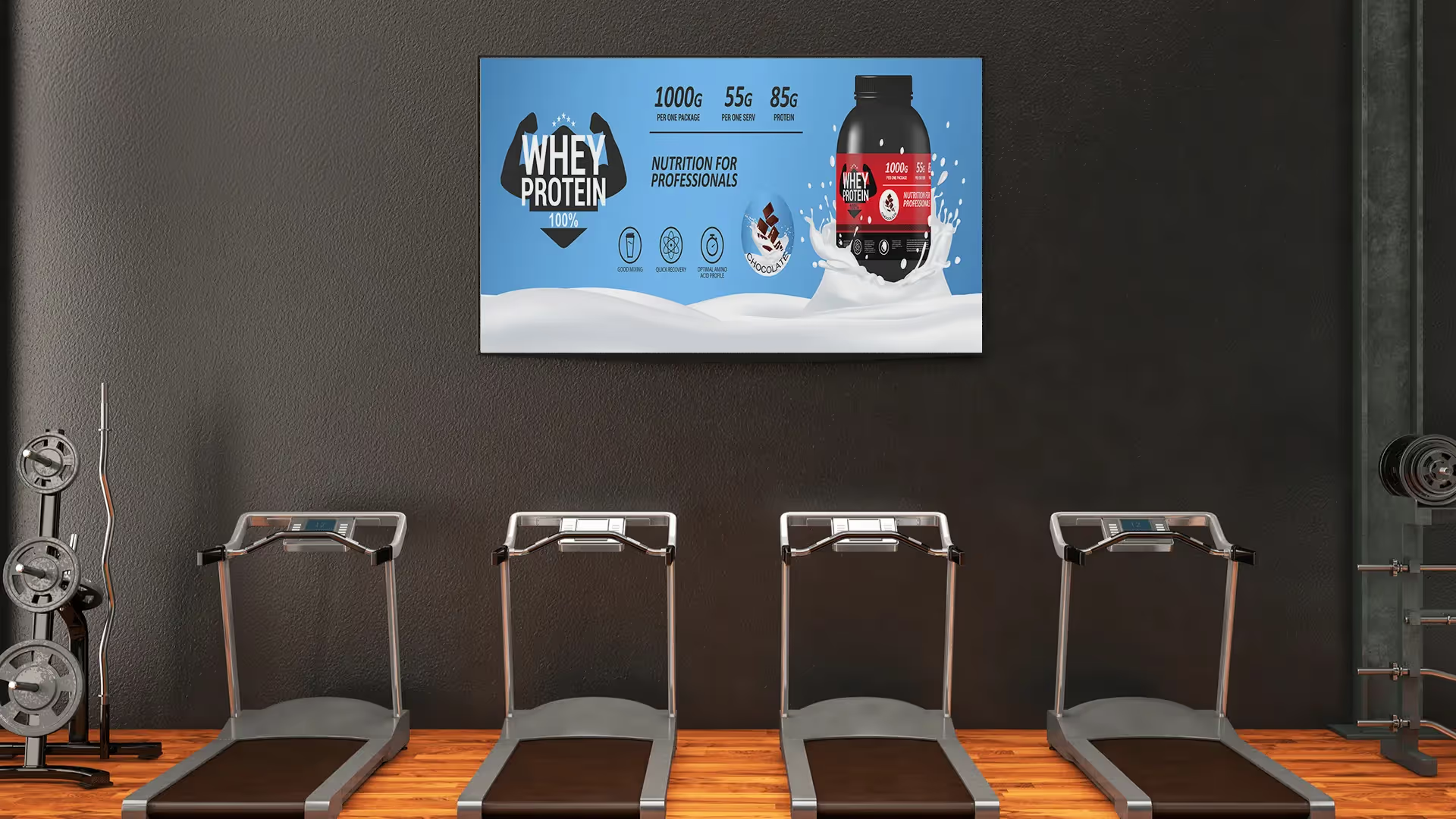What to remember
Screens at the service of retail performance 🚀
An IFOP study Reveals that 70% of French people pay attention to digital screens. A statistic well known to retailers who did not hesitate to use digital signage to communicate more effectively.
Positioned in streets, shop windows or near cash registers, The benefits of screens listed by the brands are numerous:
- Drain more traffic
- improve the customer experience
- highlight products and offers
- Increase the average basket
- increase customer loyalty
- improve their brand image
- boost the performance of internal sales teams
However, retailers still need to concretely measure the ROI of their communication on screens. KPIs specific to the retail sector make it possible to better monitor digital signage campaigns and to continuously improve store profitability.
What are these retail KPIs and what performance challenges do they meet?
Retail KPI 1: point of sale traffic 👫
For retailers that have a network of points of sale, attracting more in-store traffic is a priority.
“80% of consumers go to stores because a display initially caught their interest”
Accenture - 2019
Data that reinforces the choice of retailers to use dynamic signage outside stores or in windows with a “drive-to-store” purpose.
Key indicators to follow: To concretely measure the impact of screens in the generation of “physical” traffic, it will therefore be advisable to measure store traffic on a daily basis. In addition, The time spent by the visitor on site will also offer a relevant revelator.
Another key indicator to track: The number of interactions between potential visitors and the screens placed in the window. This data can easily be measured thanks to the installation of sensors that will make it possible to refine customer knowledge by collecting socio-demographic information such as the age or gender of future customers.
Last retail KPI to use: The attractiveness of a store. To calculate it, it will suffice to establish the relationship between the people who actually went to the store and the overall external traffic.
Retail KPI 2: the evolution of sales 📈
Increasing turnover is of course the ultimate goal of retailers, and the best indicator of store performance. To meet this objective, For example, screens are used to draw attention to the launch of a new product or service. They will also be relevant to highlight special or promotional offers.
Communication on screens would allow an average increase in sales of 24% (POPAI).
Key indicators to follow: To measure the retail performance of your digital signage, you just need to note The dynamism of sales on a product as soon as it has benefited from on-screen communication. To go further, you will also have to pay attention to The evolution of the average basket.
The conversion rate at the point of sale will also be a performance indicator to follow. To calculate it, simply study the number of cash receipts issued in relation to the number of store entries.
Retail KPI 3: brand image 🌟
The phygital strategy, which consists in digitizing points of sale, also meets other challenges for retailers: modernise their image and make their brand more influential. Retailers will thus tend to relay their social media publications on “in-store” screens, or to set up contests and other interactive content.
Key indicators to follow: The virality of content and the commitment of the targets to the actions taken will be the key performance indicators to determine the ROI of digital signage in an influence and brand image strategy.
At the same time, it will also be relevant to conduct qualitative studies (customer questionnaires) to better appreciate the role played by screens in the perception of a brand by its targets.
Retail KPI 4: Customer experience and loyalty 🛍️
Skillfully positioned in a store, at the cash register, in the window or at the entrance, screens are great tools to improve the customer experience and store performance. Marion Montambaux (Boulanger) is thus pleased to note for her customers that “the perceived waiting time seemed to be two to four minutes shorter when there was a screen”. A good practice that “unconsciously impacts customer satisfaction and therefore also affects ROI”.
A POPAI study shows that 79% of respondents find that digital signage reduces the feeling of waiting. An optimized customer experience that will also make it easier for customers to come back to the store.
Performance indicators to follow: To measure how screens fit into the phygital shopping journey (ROPO), and besides Perceived waiting time, it will be useful to conduct satisfaction surveys.
Another indicator to track for a store is its ability to retention : a KPI that will be used to measure customer loyalty. It will be possible to study it by finely analyzing the history of visits by linking it to its digital signage campaigns.
Cenareo helps retailers boost their retail performance through dynamic ROI campaigns driven by retail KPIs that optimize the impact of screens at the point of sale.













